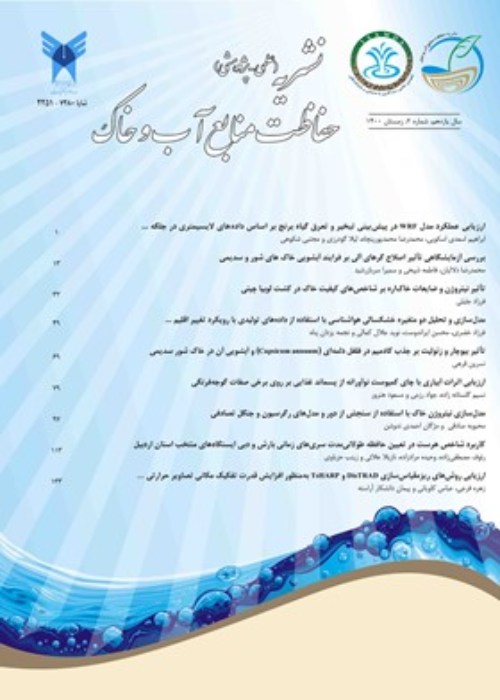Point Sources Pollution Index Development in Well Capture Zones with Mathematical Modeling Approach (Case study: Meshgin Shahr plain)
It is possible to identify the areas of plains that are highly vulnerable to contaminating wells by modeling, integrating, and developing indicators. The presence of polluting points in these areas will bring and intensify the risk of contamination of wells. The main goal of this research is to develop and provide a new index to determine the vulnerable levels around the wells that can cause the pollution of drinking and agricultural wells and, consequently, the pollution of the aquifer. In this research, the combination of point pollutant sources density was used as a risk index and well capture zones as a vulnerability index. This method is more accurate than other methods because it takes into account features such as discharge, natural damping, soil, aquifer hydraulic conductivity, land use, landcover, and distribution of wells, and it is a combination of vulnerability index and risk index.
In the present research, the vulnerability of Meshginshahr’s plain’s aquifer with an area of 614 square kilometers is estimated using the combination of two factors of the density of polluting sources in the areas of the rivers and the well capture zones.First, the density of point pollution sources such as industries, villages, gas stations, as an index of potential polluting sources in Mashgin Shahr’s plain’s rivers is determined by Karnal method in GIS environment. Then, numerical modeling is done to determine the well capture zonesusing MODFLOW and MODPATH models.The statistical data of 10 years from 2011 to 2020 is divided into three categories.The first 8 years are used for the calibration, and the last 2 years were used for model validation.Modeling was performed for stable state.Then the parameters of hydraulic conductivity, recharge and anisotropy are subjected to sensitivity analysis.In the next step, using the MODPATH model and based on the results of the MODFLOW model, well capture zonesor areas with high vulnerability are estimated in different periods.By combining the density layer of point pollutants in the rivers’ protection area and well capture zones, the developed pollution index of the plain is obtained.
The density of pollutants in the region varied from zero to 0.998 items per square kilometer, so that the highest density is in the southwest of the plain, around the important cities of the region. In 16% of the total surface of the plain, there is no capture of pollution by wells. The final capture with 25% of the plain has the largest share and the 10-year capture with less than 1% of the plain has the lowest share. The results of the final index shows that the entire level of the plain is in the range of low risk, and about 50% of the level of the Meshgin’s plain is in the range of low vulnerability. The results of this index are validated based on the density of two important pollutants, nitrate and chloride, which have a positive correlation with the vulnerability index. Two potential pollutants are selected as accuracy parameters to confirm the result of the index developed in this research. Nitrate is considered in rural and agricultural areas, which are affected by agricultural fertilizers and sewage. Chloride also indicates pollution in industrial and commercial places. The results show that the relationship between the two parameters of chlorine and nitrate is almost linear, so that the Pearson correlation coefficient for nitrate is 0.58 and for chloride is 0.49.
The results of this research indicated that in the plains’ management in order to protect the wells’ water quality, the combination of the risk index of point pollutants in the rivers and the vulnerability of the well capture zones can play an important role, and in the industrial development of Mashgin Shahr plain, priority should be given to areas with lower risk. Due to the fact that there are no industrial towns or units in Mashgin Plain, it is not possible to evaluate the risk classes of this index with the spatial changes of groundwater pollution, and it is recommended that this index be used and evaluated in industrial plains. The index presented in this research is simpler compared to other developed indices in the field of aquifer pollution, however; for more accuracy, the weight of the effect can be determined for any point or non-point pollutant, or other parameters can be used
- حق عضویت دریافتی صرف حمایت از نشریات عضو و نگهداری، تکمیل و توسعه مگیران میشود.
- پرداخت حق اشتراک و دانلود مقالات اجازه بازنشر آن در سایر رسانههای چاپی و دیجیتال را به کاربر نمیدهد.


